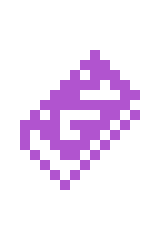From Entropy to Hierarchy, 2nd Edition
|
1 lb. Weight | |
Potential
Mods?Mods this item can support (subject to additional logic & rules) |
|
|---|---|
Character
|
= |
ID?Use this ID to Wish for the item
|
FromEntropytoHierarchy2 |
Spawns in
|
|
Infobox data from game version 2.0.207.72
| |
Crisp pages of goatskin vellum are bound into a codex.
From Entropy to Hierarchy, 2nd Edition is a book written by ![]() Q Girl.
Q Girl.
Contents
Formulation and Animus
In the course of my readings and correspondances, I've observed two eminent threats to social equality. The first is the dissolution of social order via entropic forces. The fabric that holds us together frays and we fall apart, our most vulnerable first. The second is hegemonic control exerted by a few over a many. Here the fabric is knit tightly, but it's stitched into a ladder that narrows in ascension, and the majority are consigned to the bottom rung.
My first task is to ask how we can study these phenomena. In the physical sciences, we observe, measure, and experiment in order to formulate and then test hypotheses. Here, though, observations are sectional, data is spottier, and the systems at play are far more complex, their edges softer. Applying a 10x scope of rationality to a 1000x-scale structure would lead me to harmfully reductive conclusions. In fact, this very approach is employed by hegemonic powers to invent facile justifications for their rule.
So in complement, I borrow from other approaches and systems of thought. In particular, I'm interested in how artists examine these phenomena and challenge orthodoxy through metaphors. The art-historical record is fragmented but fraught with examples. One that stands out to me is the account of Red Sky, whose totally quetzal conceit was the first to whet my curiosity on the subject.
As the story goes, the entire court of an ancient sultan, including the sultan himself, was addicted to a psychotropic salt called Ipsis. Conspiring with a sorority of smugglers, an unnamed artist plundered the sultan's stock of Ipsis, molecularly altered it into a composite cellular structure, and launched it into low orbit. There it burned red in the sky, an affront to the sultan's sovereignty, for three years. Each time the sultan tried to disperse it through the means available to him, the structure, described in the record as a cellular automaton, rearranged itself and persisted. Quetzal.
There are plenty of modern examples too. Take Tau, who makes psionic mazes through the hexagonal crystals of the Moon Stair. I first formulated the entropy/hierarchy dichotomy while tracing the paths of two of her spirals that, at their intersections, burst into a bouquet of spacetime anomalies. I'd quetzal if I could meet Tau, but it may prove difficult as I hear she's a subentity of the sentient tree-city Chavvah.
The Two Poles
Two groups typify the two poles of the entropy/hierarchy dichotomy: the Gyre wights and the Putus Templar. The ethos of the Gyre wights is chaotic self-indulgence, manic quickening (a mulish desire to see things fall apart faster), and a fetishization of history's dice rolls. They billow like an excited gas, smashing into each other as often as anyone else, and peeling bits of order from the communities they rancify. They are exponents of senseless violence.
The Templar on the other hand are enactors of extremely ordered violence. Their brutality has been codified into orthodoxy. Their ideological structures are anti-entropic but destructive and abhorrent. They seek to construct a rigidly hierarchical society with a slave caste on the bottom rung. Through rituals like the baptism in the blood of the reclaimed, they indoctrinate the privileged among their subjects. The rest of us are met only with force.
Erratum on the Gyre wights
An instructive discussion with a screw-sorting friend has altered my viewing plane. They relayed a dream of the Rainbow Wood, and through quite vivid metaphorization wrought a compelling argument of death as the ladder to life, which among other consequences softened my position on the Gyre wight project, if such a thing can be titled. Where am I at with it all now? I do not know. But my schema of Two Poles now feels excessive and reductive. I leave the original language in this edition for consideration.
